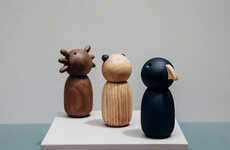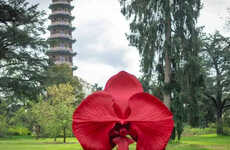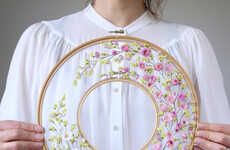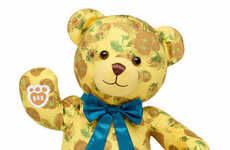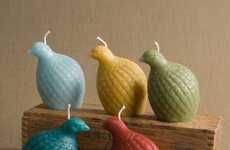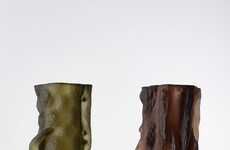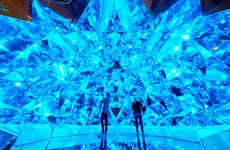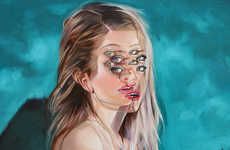
These Two Bear Statues are Entirely Covered in Wool and Red Roses
Katherine Pendrill — August 2, 2015 — Art & Design
References: janicewrightcheney & fubiz.net
Canadian artist Janice Wright Cheney recently designed two beautiful bear sculptures that are entirely covered in red roses. The prominent artist often uses unusual textiles in her work to explore issues of domestic labor and themes in natural history. Her latest project uses wool to create two stunning rose-covered bears.
Each sculpture is designed in taxidermy form, which gives them a realistic animal shape. The structure of the sculptures is made from a combination of pins and wood. However, the most stunning aspect of the statues is the exterior decoration. The bear sculptures are covered in hundreds of wool roses that have been dyed various shades of red through the use of cochineal dye. While the sculptures are visually beautiful, they are meant to represent feelings of loss, grief and survival.
Each sculpture is designed in taxidermy form, which gives them a realistic animal shape. The structure of the sculptures is made from a combination of pins and wood. However, the most stunning aspect of the statues is the exterior decoration. The bear sculptures are covered in hundreds of wool roses that have been dyed various shades of red through the use of cochineal dye. While the sculptures are visually beautiful, they are meant to represent feelings of loss, grief and survival.
Trend Themes
1. Textile Sculptures - Exploring innovative ways of designing sculptures using textiles and other unusual materials like wool and roses for a unique art experience.
2. Natural Material Dyeing - Harnessing the natural dyes like cochineal to create shades of red in wool and other textiles for creative works of art.
3. Taxidermy Sculptures - Bringing new life to old taxidermy creating artistic animal shapes in unique forms like bear sculptures and using them as a medium for creating artworks.
Industry Implications
1. Art and Design - Finding sustainable resources and natural materials like wool and roses and using natural dyeing techniques to create unique sculptures and artworks.
2. Textile Industry - Developing new techniques to create sculptural art using textiles and natural materials like wool and roses and incorporating them in fashion and home décor.
3. Conservation and Taxidermy Industry - Exploring new creative ways to use taxidermy forms and techniques to bring new life and meaning to old taxidermy pieces inspired by nature and history.
5.1
Score
Popularity
Activity
Freshness


